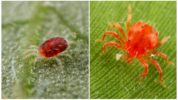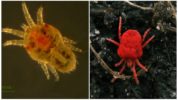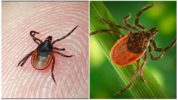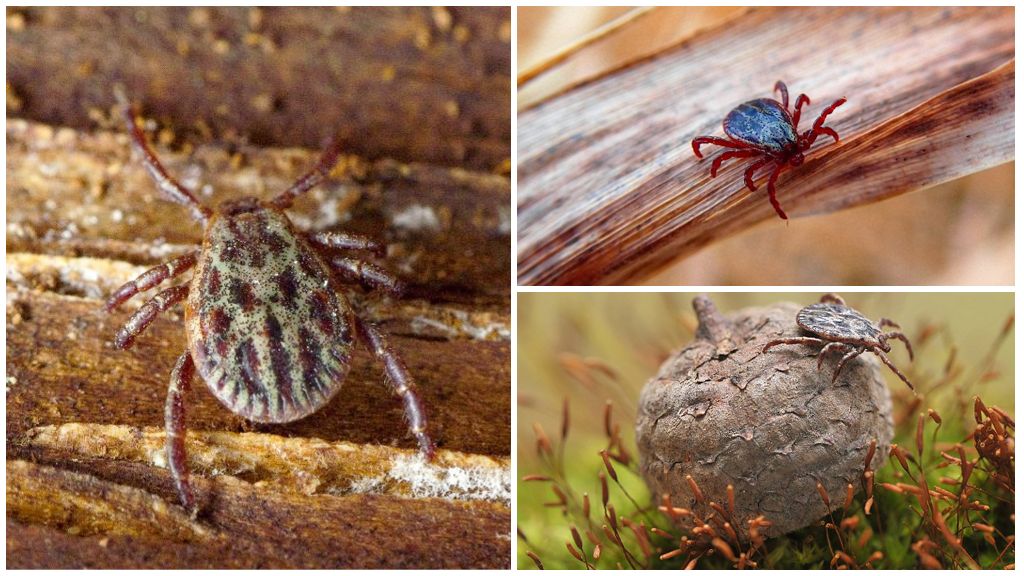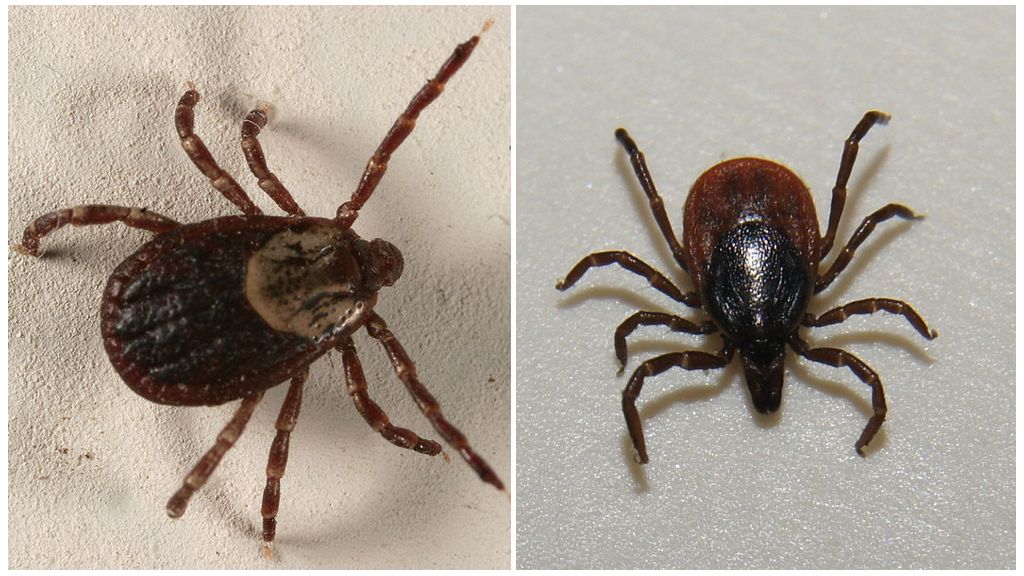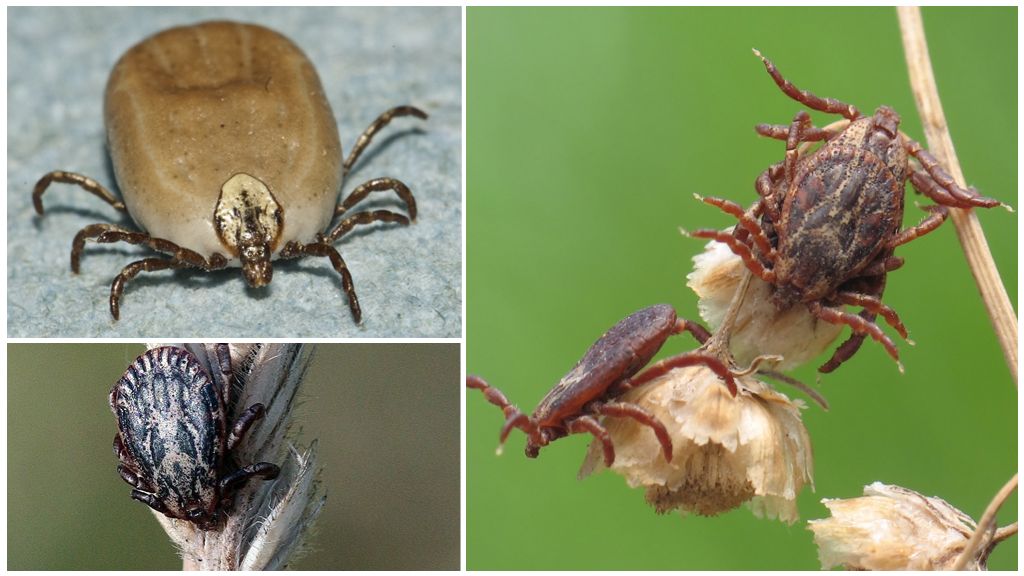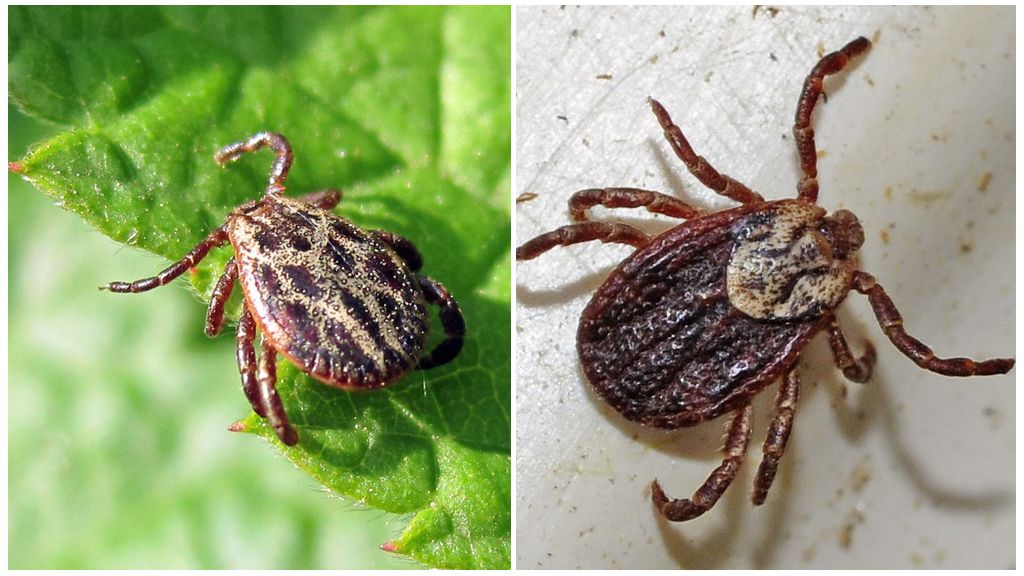- Fruit and spider mites
- Orangery flat-beetle and rudd
- Forest tick
The red tick is a prefabricated concept, since it combines several species. They differ in size, habitat, lifestyle. Among them there are pests of forest, horticultural, garden crops, flowers, as well as useful inhabitants of nature. Forest red tick is a distributor of deadly diseases - encephalitis, borreliosis.
Fruit mites
Polyphages. They harm crops from the Rosaceae family - apple trees, cherries, plums, peaches, apricots, pears, roses, hawthorn, almonds, etc. You can meet arachnids in the garden in the warm season. The number of generations per year reaches 4. Wintering eggs under the bark of trees.
Medium-sized red tick with an elongated oval belly. The body size of the female is about 4 mm; males are always smaller. The color of the abdomen is light red or cherry, black stripes on the sides. Eggs 1 mm red, orange. Larvae of the same color scheme, nymphs are red-brown, light yellow.
The average life expectancy of females is 40 days, males die earlier. Eggs hibernate under the bark, larvae appear in spring, begin active development. The colony feeds on plant juices.
On a note!
Signs of damage - light, brown spots, drying, falling off, slowing plant growth, reduced yield by 40%.
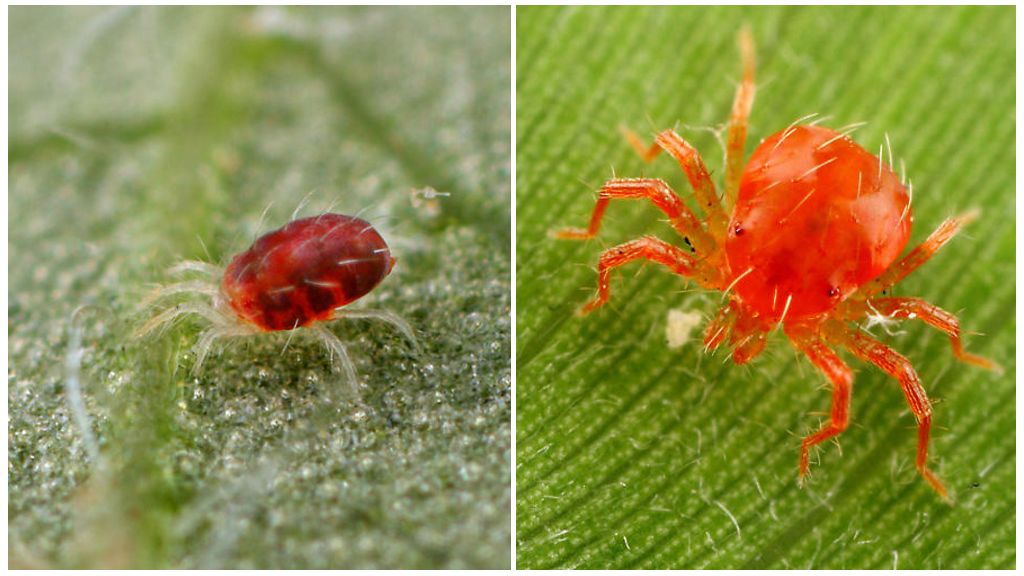
Spider web
A small red tick is a dangerous pest of plants. Prefers roses, hawthorn, pear, apple treecitrus fruits seedlings, cucumbers in the greenhouse, and indoor flowers, especially an orchid. It is problematic to notice one individual, since the maximum pest size is 0.5 mm. The red tick becomes noticeable during the mass settlement on a tree, shrub, flower.
Settles spider mite on the bottom of the sheet, sucks out the juices. Gradually affects the whole culture. Signs:
- dark, light spots on the plate;
- leaf curl, drying, dying;
- falling of flowers;
- growth retardation, fruit formation;
- yield reduction;
- the presence of cobwebs.
The humid climate promotes reproduction, the temperature is within 22 degrees Celsius.
On a note!
The spider red mite has excellent adaptive ability. With a decrease in temperature indicators it burrows into the ground, falls into suspended animation. In this state, it can stay for six months, with the normalization of conditions, it starts normal life activity.
Hothouse flattened
A tick with a red abdomen, head, legs - a greenhouse flat-body. One of the most common indoor pests. In most cases, it affects greenhouse, indoor flowers.
Extremely small tick no larger than 0.3 mm in size. The body is yellow-red or completely red. Females are able to lay unfertilized eggs, from which females also emerge. Favorable conditions for existence, development - air temperature within 20 degrees Celsius, moderate humidity. The life cycle of a tick with a red back is about 40 days. Eggs hibernate, females.
A huge colony of pests sucks the juices from plants, without proper attention from the person leads to death. Gerberas, geraniums, citrus fruits, hibiscus, orchids, ficus, and also strawberries and strawberries.
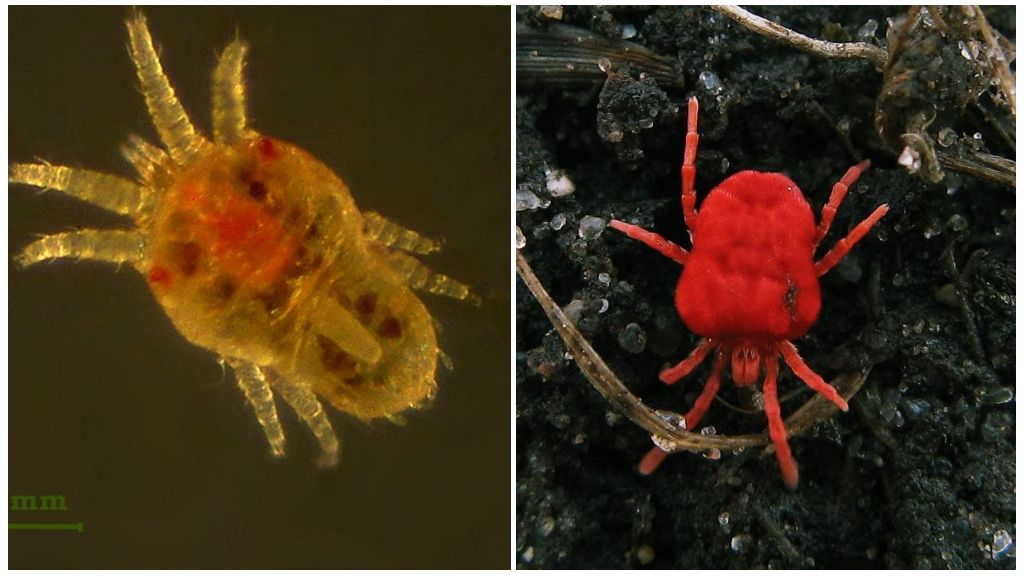
The red
It lives in the soil, often found in garden areas. Not harmful to plants, not dangerous to humans. It feeds on insects, their eggs. A mite with a red back looks more like a plush spider. The second name is a velvet tick. The body size of the female reaches 15 mm. Long thin limbs. The whole body is covered with short soft hairs. A photo of a red tick with an unusual appearance is presented below.
Red beetles live among the wild, love the forest, edges, meadow. They do not pose a danger to a person, but they can bite if they threaten their own life. A red spot, swelling, thickening, slight itching remain at the site of the lesion. The condition normalizes within a few days.
In total, 300 species of red beetles are known, 30 live in our area. Adult individuals winter in the earth, eggs. Over the summer, 1-2 generations grow.
Interesting!
A tick with a red booty, velvet cover is widely used in Indian folk medicine. Arachnid oil tends to enhance sexual desire, prolong sexual intercourse, and improve potency in men. Used as a natural Viagra.
Forest tick
Refers to ixodic family. In the territory of our country lives taiga - red-brown or brown, European - red with black limbs. They feed on the blood of animals, people. As food enters the body, it changes color slightly and becomes brighter.
Body size of arachnids in a hungry state, 3 mm; during nutrition, the abdomen expands, increases to 13 mm. A red tick is dangerous for humans by a bite with an allergic reaction.
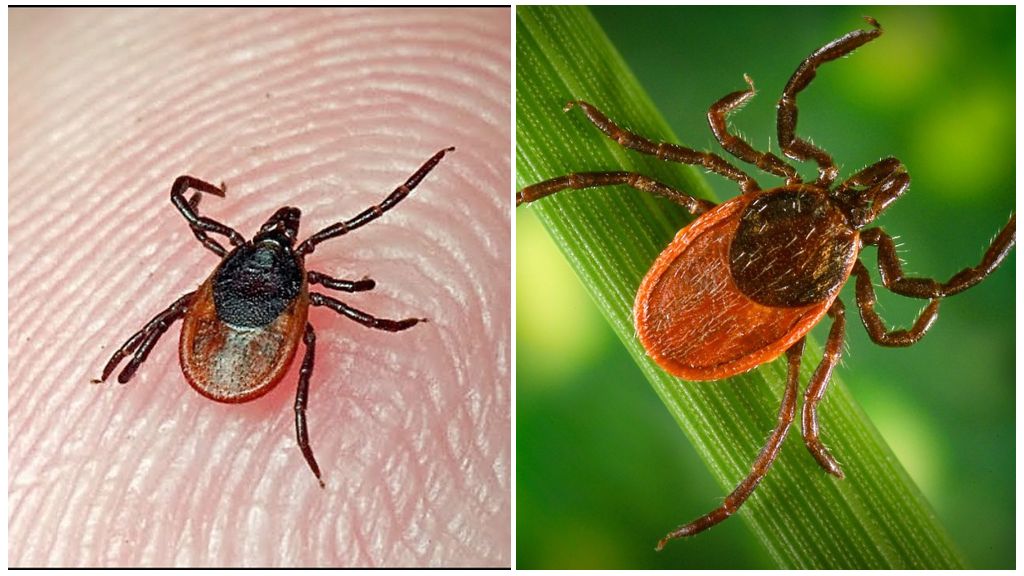
Females, larvae, nymphs of different ages await the victim in the tall grass. React to heat, smell. After getting on the body, they hide under the armpits on the neck, behind the hair, in the groin. They bite the skin, stick the head inside, and start feeding. In this state, they stay from 2 to 8 days.
A red tick is dangerous for humans by the spread of a dangerous disease. Infected individuals transmit through saliva, blood tick-borne encephalitisborreliosis or Lyme disease. Viruses affect the circulatory system, central nervous system, spinal cord, brain, lead to paralysis, dementia, death, disability. Bacteria are localized in the heart, liver, blood vessels, muscles. Effects - disability, paralysis, death.
Prevention
To prevent the disease in the epidemiological regions do encephalitis vaccinations the local population, guests, specialists who are there for work. To avoid tick bitefollow certain rules:
- in the forest they put on clothes made of dense fabric with cuffs, puffs;
- be sure to wear socks, a hat;
- you need to inspect the body every 2 hours, carefully after returning home;
- things are immediately thrown into the wash;
- to repel pests use repellents - Taiga, Off, Raptor, Raid, etc., essential oils;
- when staying in the forest frequently, it is recommended to wear special costumes with traps impregnated with insecticidal substances.
For baiting ticks in the forest, garden, in the country, in a personal plot, use chemicals.
